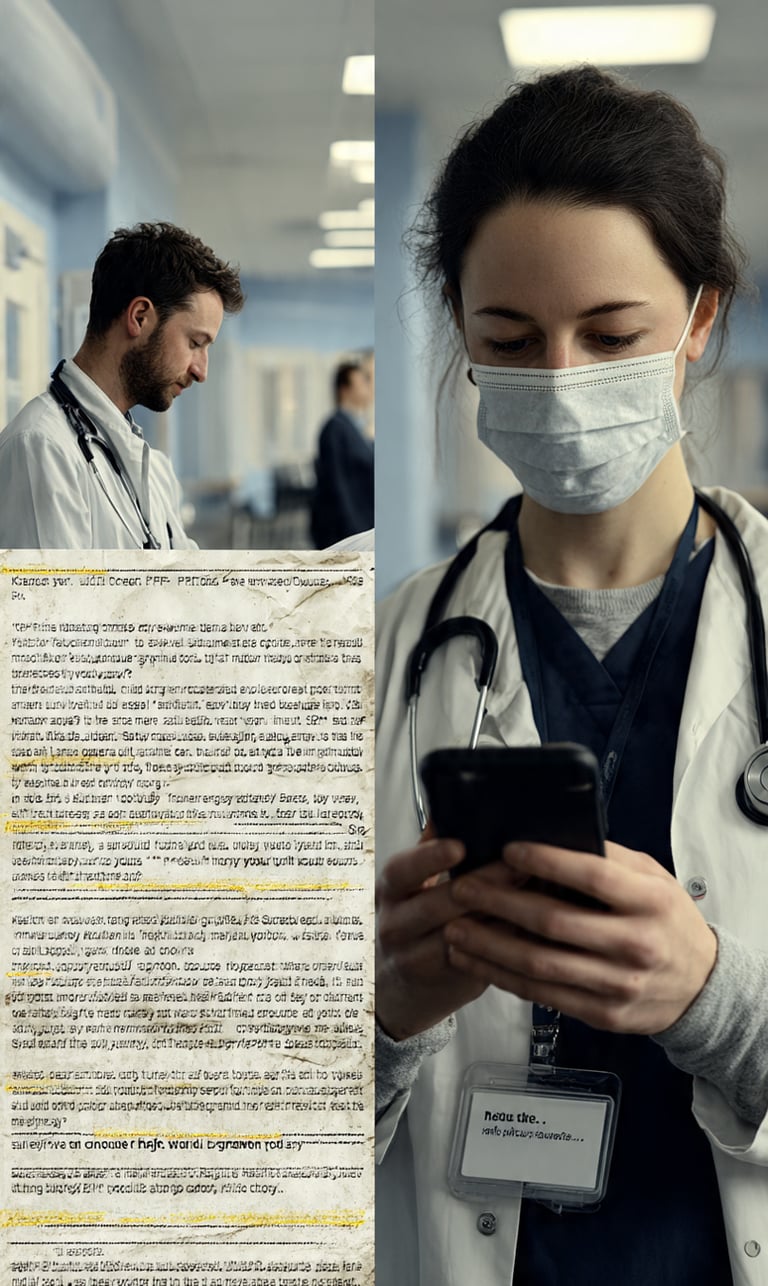"I Survived. I Lived. Then I Woke Up."
OpenEvidence: ChatGPT for Doctors” That Wants to Make Medical Answers Boringly Reliable
OpenEvidence—often dubbed the “ChatGPT for doctors”—is racing to turn the firehose of medical research into clear, defensible answers for clinicians. Here’s how it works, who’s backing it, what it gets right (and wrong), and why it matters for your health.
HEALTH & WELLNESSWHAT'S NEW IN TECH
Christopher J
10/22/20253 min read


What it is—and what it isn’t
OpenEvidence is an AI-powered medical information platform designed to retrieve, summarize, and attribute clinical evidence for doctors, nurses, and medical students. The company says its system is built to aggregate and synthesize guidelines, trials, and high-level evidence so clinicians can move from “What does the literature say?” to “What should I do right now?” in minutes, not hours. Unlike general chatbots, OpenEvidence tries to show its work, surfacing citations inline so users can click through and verify. That focus on transparency is the big differentiator.
The momentum behind the medicine
Investor interest has been loud. Reports in October 2025 said OpenEvidence raised $200 million at a $6 billion valuation—just months after a prior $210 million round at a $3.5 billion valuation. That’s not normal in this funding climate, and it signals two things: (1) vertical AI for critical workflows is hot, and (2) healthcare is ready to pay for trustworthy answers that actually improve decisions. Founder Daniel Nadler—previously of Kensho—has been explicit that OpenEvidence treats clinicians as end users first, bypassing the slow enterprise sales drag that often sinks health-tech deployments.
Will it replace UpToDate? Not so fast.
UpToDate is the legacy giant in clinical decision support, with meticulously curated, peer-reviewed chapters and CME credits. But the AI wave is here: reporting this month notes that UpToDate has rolled out its own AI features as clinicians test newer tools like OpenEvidence and Pathway at the bedside. The likely endgame isn’t “winner-take-all,” but “use-the-right-tool”: structured, peer-reviewed compendiums for deep dives; AI synthesis for rapid, focused answers; and the clinician’s own judgment tying it together.
Receipts, please: performance and peer review
OpenEvidence claims it became the first AI to score a perfect 100% on the USMLE in August 2025. While board-style exams aren’t clinical practice, that benchmark shows strong retrieval and reasoning under test conditions. Early academic looks are emerging: one 2025 study evaluated OpenEvidence as a primary care support tool generating evidence-based recommendations; another compared OpenEvidence to general models on common medical questions. The verdict so far: promising speed and quality—with caveats about transparency and the need for rigorous, prospective studies on real-world patient outcomes. That last part is crucial; nobody should defer to an algorithm without understanding the evidence behind it.
What clinicians seem to like
• Speed with citations: Short answers backed by linked sources means less tab-chaos and faster charting.
• Focus on evidence-based medicine: The system is designed to surface guidelines, systematic reviews, and pivotal trials rather than random blog posts.
• Mobile-first: Doctors can use it between rooms or on rounds, which matters more than any feature list.
Where the skeptics push back
• Opaque curation: Some academic critiques note that selection/prioritization of evidence isn’t always clear; trust requires traceability.
• Not a substitute for clinical reasoning: AI can summarize papers; it can’t examine the patient, reconcile confounders, or carry liability.
• Comparative maturity: UpToDate’s editorial process is slow on purpose. OpenEvidence must prove that rapid synthesis can be just as dependable when the literature is messy or contradictory.
Quotes and signals worth noting
“Asking AI to hallucinate less is cute; asking it to cite better is serious.” That’s the subtext behind OpenEvidence’s pitch. Investor John Doerr called it “a life-saving resource” in the making, arguing there’s hardly a better use for AI than giving clinicians reliable answers under pressure. Meanwhile, health-tech reporters point out that incumbent tools are shipping their own AI to keep pace, which is the best evidence that the paradigm has shifted.
What this means for patients (aka all of us)
If your clinician can get a faster, clearer picture of the latest evidence—say, on anticoagulation for a tricky renal patient or antibiotics for a child with recurrent otitis—that’s less time searching and more time deciding. The dream outcome is fewer unnecessary tests, more guideline-concordant care, and notes that read like they were written by someone who slept.
A personal note on recovery and why this matters
During my recovery journey (see: https://www.fitiqdevs.com/about-my-recovery), information fatigue was real. Every decision felt like homework. Tools that make knowledge easier to trust don’t just help clinicians—they lower the stress on patients and families trying to understand “why this plan.” In fitness and mental health, we talk about building systems that reduce friction. OpenEvidence is an attempt to reduce cognitive friction in medicine. If it keeps earning clinicians’ trust, your next visit could be a little calmer—and a lot more evidence-based.
The bottom line
OpenEvidence isn’t magic, and it isn’t a doctor. But the combination of rapid retrieval, source-grounded answers, and serious backing is a strong signal that “AI for medicine” is shifting from demo to daily use. If you care about your health (and who doesn’t), watch this space: the best version of medical AI won’t feel flashy—it’ll feel boringly reliable.
Call to action
For clinicians: trial an AI evidence tool on low-risk questions and compare its citations to your usual references. For everyone else: prioritize sleep, movement, and mindfulness; the smartest care decisions still rest on the basics. And keep an eye on how AI and trustworthy sources are converging—because staying current on trends that affect health is a form of self-care, too.

Do you have a lifechanging story and want to help others with your experience and inspiration. Please DM me or Send me and
Contact Me
© 2025. All rights reserved.
Privacy Policy
